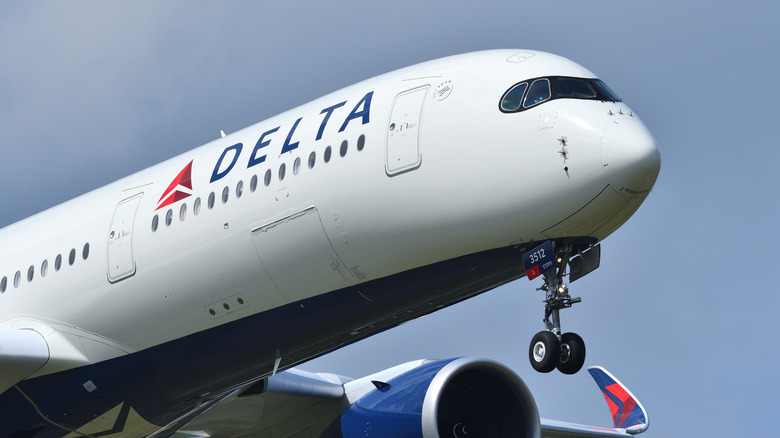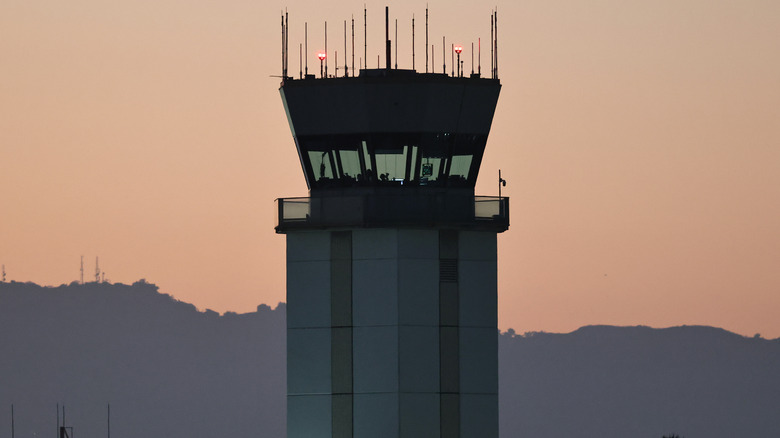Delta's CEO Explains Why Air Traffic Control Systems Are Slowing Down Our Flights
Air traffic controllers have one of the highest-pressure jobs with the most responsibility on the planet. According to the Federal Aviation Administration, the United States' Air Traffic Organization is responsible for more than three million fliers on a daily basis, and the country's network of air traffic controllers has a crucial role in keeping them safe during their journeys. You might think that they'd have state-of-the-art equipment at their disposal to do so, but Delta CEO Ed Bastian reports that this is, sadly, far from the case.
In a May 2025 interview with Today, Bastian was shown images of a current air traffic control facility, which presenter Savannah Guthrie reported, "looks like they could be from an Apollo 13 flight ... fans ... some of these have foil ... we've talked about copper wires." Bastian responded that any flyer seeing these images probably becomes very uneasy about flying. Because of the potential scale of an aircraft accident, the industry is supremely danger-averse, and in combination with equipment in severe need of revamping, this can have a profound effect on flight timing. "What happens is," he went on, "in order to keep it safe, everything gets slowed down at the sign of any kind of risk." He gives a particularly egregious example of the results of all this: Delta began flights between LaGuardia and Atlanta in the 1950s, and this flight takes longer now than it did then.
"It's a radar point-and-shoot system from the 1960s that the controllers are operating with," concluded the Delta CEO. The situation certainly isn't news to the industry at large, but neither is the huge financial burden of resolving it in U.S. airports.
Modernization efforts face real problems
This situation hasn't compromised the safety of flights, the Delta CEO told Today, but upgrading the equipment used by the nation's air traffic controllers wouldn't yield immediate results. At a House Transportation Committee hearing following the tragic collision of PAT 25 and American Airlines Flight 5342 in January 2025, Chairman Nehls noted that it was an enormous "technical challenge to modernize a robust system with little to no interruption that runs 24 hours a day, seven days a week, 365 days a year," as well as the fact that doing so would have to take place in tandem with maintaining crucial equipment that was already in use. As such, the committee noted, progress was fraught with challenges.
Delta's Ed Bastian explained to Today that GPS and satellite technology implemented in an air traffic controller's repertoire could make their work much more efficient and the industry at large. It would be a slow and expensive process, but systems such as the floppy disks the FAA still uses to manage flights are long since past needing an upgrade. Fortunately, these changes are coming. In May 2025, President Trump and Transportation Secretary Sean P. Duffy announced the beginning of a new initiative to modernize air traffic controllers' equipment at over 4,600 facilities, incentivize new controllers to join and complete their training by offering financial bonuses, and more. In this way, both issues of staffing shortages and the outdated equipment could begin to be tackled. It remains to be seen how expensive the work will be (initial estimates from the committee of around $12.5 billion were too low, according to the Transportation Secretary), but, in a statement, Duffy said that "building this new system is an economic and national security necessity."

